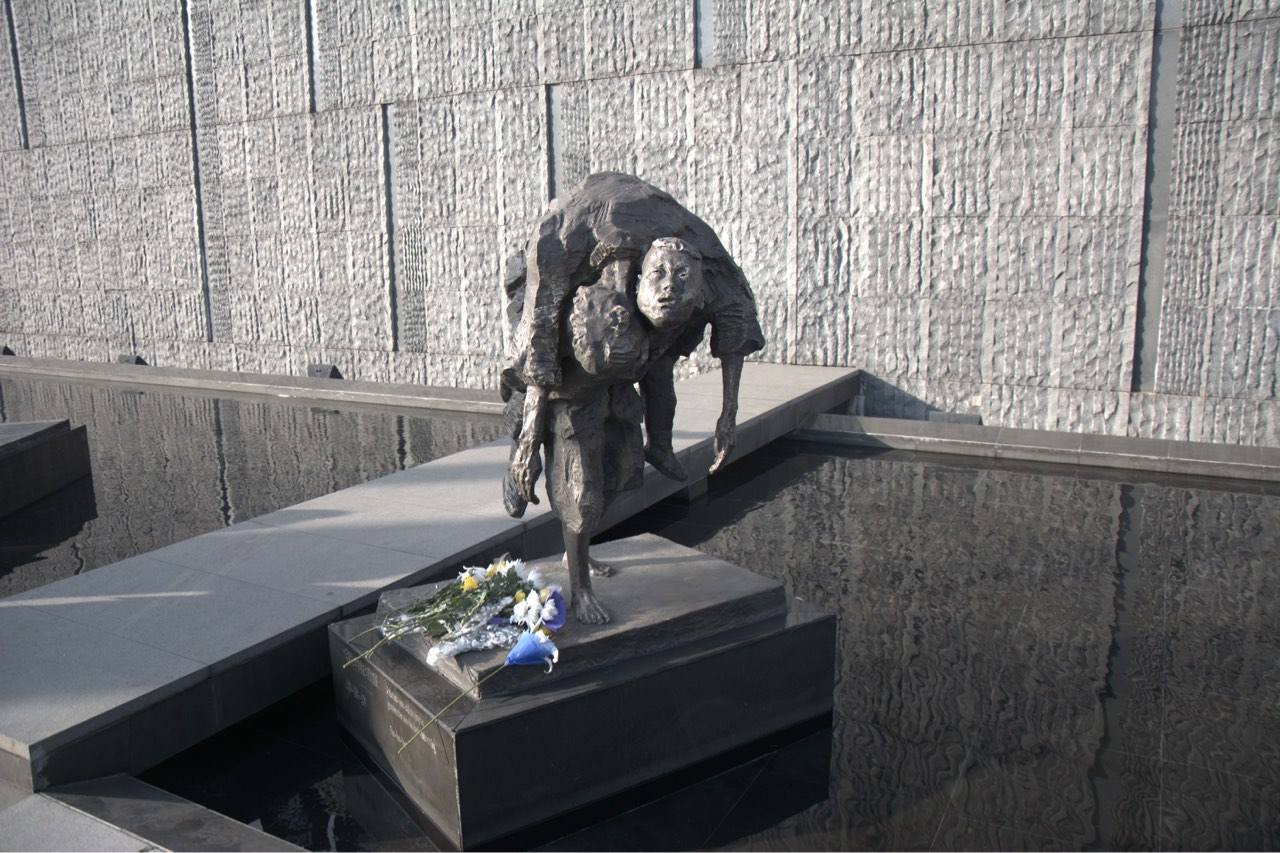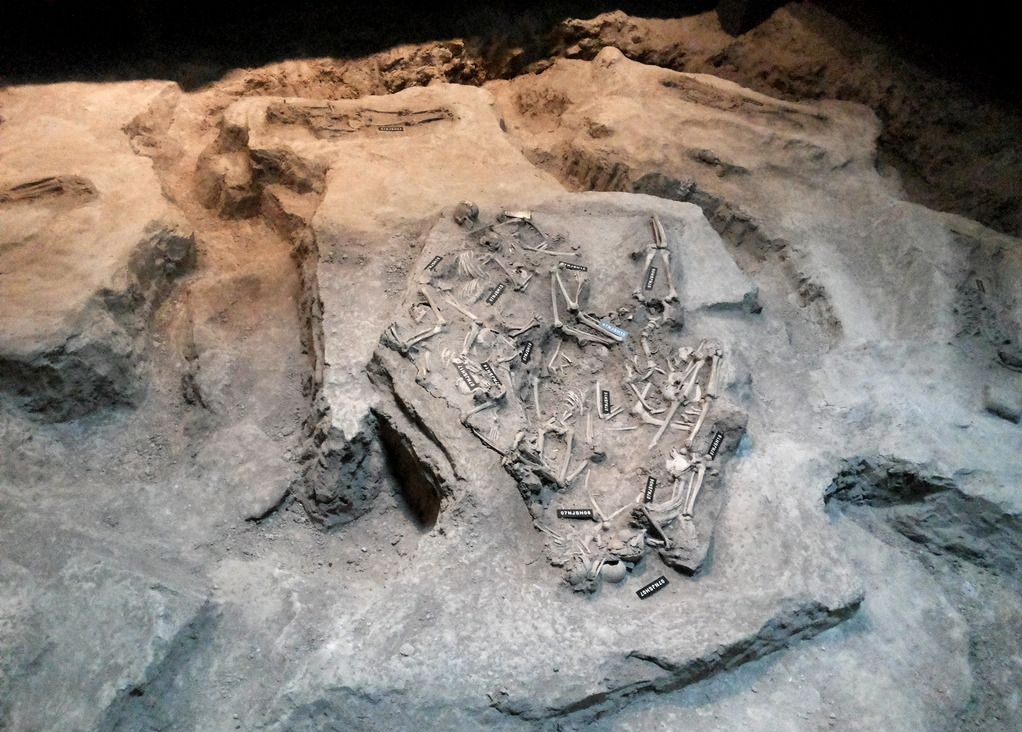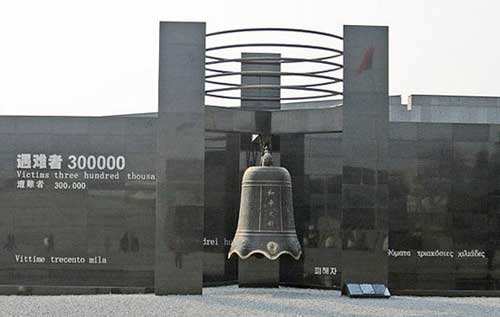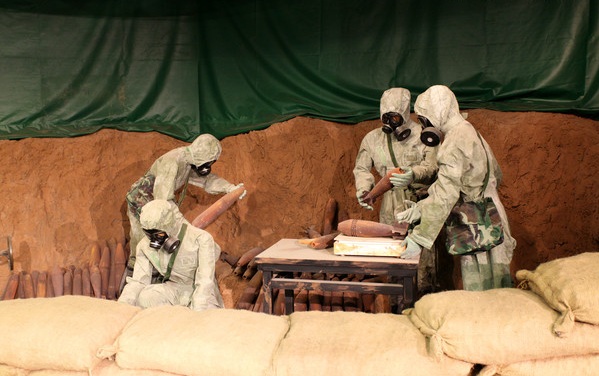24 Hours Hotline: +86 137-3541-1378
Email:suzhou@tripstoshanghai.com
24 Hours Hotline: +86 137-3541-1378
Email:suzhou@tripstoshanghai.com

Nanjing Massacre and Memorial Hall, Nanjing Attraction
Brief Introduction
The memorial hall is located at No. 418, Shuiximen Street in Jianye District, a locality also known as Jiangdongmen, close to a site where thousands of people were killed and buried. The hall comprises four sections: exhibition zones, the sheltered skeletal remains of victims, an outdoor square, and an exhibition hall displaying historical documents.
The entire edifice is built in greyish white marble and exudes an imposing solemnity. The hall highlights every aspect of the Nanjing Massacre with historical materials, cultural relics, architecture, sculpture, and film. It occupies a total area of 120,000 square meters. An area of 18,000 square meters is given over to exhibitions whose exhibits include 200,000 or more historical items related to the massacre.
The truth of Nanjing Massacre
On December 13, 1937, after seizing Nanjing, the Japanese army carried out a bloody slaughter of unparalleled savagery in violation of international law.

As stated in the Judgment of the International Military Tribunal for the Far East, "Estimates indicate that the total number of civilians and prisoners of war murdered in Nanjing and its vicinity during the first six weeks of the Japanese occupation was over 200,000....These figures do not take into account those persons whose bodies were destroyed by burning, or by being thrown into the Yangtze River, or were otherwise disposed of by the Japanese Army."
The Chinese Military Tribunal for War Crimes in Nanjing stated in a verdict that "during the period from December 12 to 21, 1937, it was estimated that more than 190,000 Chinese prisoners of war and civilians were shot with machine guns in large groups by the Japanese Army and their bodies were incinerated… In addition, more than 150,000 people were killed in small or scattered groups, and their bodies were collected and buried by charity organizations. Altogether, more than 300,000 people were murdered."
After capturing the city, Japanese troops employed all kinds of brutal methods in their killing, such as decapitation, skull splitting, slicing open the stomach, pulling out the heart, drowning, burning, cutting off reproductive organs, dismemberment, and piercing the vulva or anus.

Equally unthinkable, there was a killing contest between two second lieutenants, Toshiaki Mukai and Tsuyoshi Noda, to see who could win by being the ?rst to kill 100 Chinese. When they met on December 12, Mukai had killed 106 and Noda 105.
John Rabe, Wilhelmina (Minnie) Vautrin, and John Magee recorded the incidents of rape carried out by Japanese soldiers after the fall of Nanjing in their diaries, photographs, and ?lms. It is roughly estimated that more than 80,000 women were violated in Nanjing, of whom more than 65,000 were killed.
The Japanese army also committed frenzied acts of arson and looting. According to incomplete statistics calculated after the war, Japanese soldiers looted 2,406 sets and more than 309,000 pieces of appliances or utensils, 5,920 boxes and more than 5.9 million articles of clothing, 710 kilograms of gold and silver, plus 6,345 pieces of jewelry, 1,815 boxes, 2,859 sets, and 148,600 volumes of books, more than 28,400 ancient calligraphy scrolls and paintings, more than 7,300 antiques, more than 6,200 animals bred as livestock, and more than 720 million kilograms of grain. The International Military Tribunal for the Far East and the Chinese Military Tribunal for War Crimes in Nanjing, after collecting a large amount of evidence and confirming all the findings, pronounced death sentences for the principal culprits of the massacre, Iwane Matsui, Akira Muto, and Tadayuki Furumi. The crimes of the Japanese aggressors will forever be recorded in the history of the Chinese war of resistance against Japan.

Travel Guide
Opening Hour: 8:30-16:30, close on Monday
Admission Fee: Free
Recommended Time for Visit: 4-5 hours
How to get to Nanjing Massacre Memorial Hall
Metro Route: Take Line 2 and get off at Yunjin Road
Bus Route:
1. Take Bus No. 7, 37, 39, 57, 82, 161, 186, 312, Y3, Y7 or D7 and get off at Jiangdong Wanda Square of stop
2. Take Bus No. 7, 37, 61, 161, 170, 186, Y7 and get off at Jiangdong Gate stop
3. Take Bus No. 7, 37 or 61 and get off at Jiangdong Memorial Hall stop
Duration:6-8 Hours
Attractions(Cities):Nanjing Massacre Museum, Presidential Palace, Yuejianglou Tower, Confucius Temple
Tour Style:This one-day Nanjing private tour offers a perfect blend of history, culture, and scenic beauty. Your day begins at Sun Yat-Sen’s Mausoleum, nestled against the stunning backdrop of Purple Mountain, where you’ll learn about the legacy of modern China’s founding father. Next, visit the Ming Xiaoling Mausoleum, the burial site of the first Ming emperor, famous for its grand architecture and tranquil surroundings. In the afternoon, head to the Confucius Temple, a serene cultural site set along the lively Qinhuai River, where you can immerse yourself in both the spiritual significance and local charm of Nanjing’s historic heart. Finally, explore the Nanjing Ming City Wall, a well-preserved fortress offering panoramic views of the city. This thoughtfully crafted itinerary offers a comprehensive look at Nanjing’s iconic landmarks, combining rich history with scenic landscapes for an enriching and memorable experience.
Duration:10+ Hours
Attractions(Cities):Sun Yet-Sen Mausoleum, Ming Xiaoling Mausoleum, Zhonghua Gate, Confucius Temple
Tour Style:This Nanjing Day Tour from Shanghai offers a deep dive into the history and culture of the Ming Dynasty. Visit must-see landmarks such as the ancient City Wall, the impressive Ming Xiaoling Mausoleum, the formidable Zhonghua Gate, the vast Nanjing Museum, and the serene Confucius Temple. Each site offers unique insights into Nanjing’s rich historical and cultural heritage. With personalized service and expert guidance, this tour ensures a seamless and enriching experience, allowing you to explore Nanjing’s rich heritage at your own pace while learning about the city’s pivotal role in Chinese history. Enjoy comfortable transportation and ample time to absorb the beauty and significance of each landmark, making for a memorable and immersive day in one of China’s most historic cities. This expertly designed itinerary combines cultural immersion, historical exploration, and local flavor, ensuring a comprehensive and fulfilling experience for every traveler.
Duration:6-8 Hours
Attractions(Cities):Linggu Temple, Qixia Temple, Jiming Temple
Tour Style:This Nanjing 1 day tour is thoughtfully crafted for travelers seeking a deep, soulful experience that blends Buddhist spirituality with the tranquility of nature. Ideal for those interested in cultural immersion, spiritual reflection, and scenic beauty, the tour brings you to Nanjing’s most revered temples—Linggu Temple, Qixia Temple, and Jiming Temple—each with its own unique atmosphere and historical legacy. Gentle forest walks on Purple Mountain and around Qixia Valley provide moments of serenity and scenic wonder, while a wholesome vegetarian lunch adds a mindful, nourishing touch to your journey. Led by an insightful English-speaking guide, this tour offers not only historical knowledge, but also emotional connection and cultural depth. Whether you’re a solo traveler, a couple, or a group of spiritually curious explorers, this full-day escape promises peace, inspiration, and a deeper understanding of Chinese Buddhism and nature-based philosophy.
Duration:6-8 hours
Attractions(Cities):Niushoushan, Zhonghuamen Gate, The Confucius Temple
Tour Style:This private Nanjing day tour blends spiritual discovery with historical exploration, offering a balanced journey through the tranquil Buddhist temples of Niushoushan, the formidable Ming-era architecture of Zhonghua Gate, and the vibrant cultural atmosphere of Confucius Temple. At Niushoushan, you’ll uncover the deep-rooted Buddhist traditions and admire the magnificent Usnisa Palace, a masterpiece of religious architecture. Then, step back in time at Zhonghua Gate, the largest surviving ancient city gate complex in China, where military strategy and craftsmanship meet. Finally, soak in the lively charm of the Confucius Temple area, with its riverside views, traditional streets, and enduring legacy of Confucian thought. Ideal for travelers seeking cultural depth, peaceful scenery, and architectural wonders, this one-day experience combines sacred spaces, ancient city walls, and historic ambiance—all with the comfort of a personal guide, private vehicle, and local insights that bring Nanjing's rich heritage to life.
Duration:6-8 Hours
Attractions(Cities):Sun Yet-Sen Mausoleum, Presidential Palace, Lingu Temple, Confucious Temple
Tour Style:Make the most of your time to get a unique travel experience in Nanjing on a full-day Nanjing tour. Served as the capital city of ancient China, Nanjing is endowed with profound history and cultural sites. With your knowledgeable and historical guide, you'll visit the majestic Sun Yat-Sen Mausoleum, marvel at the Presidential Palace, explore the peaceful Lingu Temple, and follow in the paths of emperors on a relaxing Qinhuai River cruise near the Confucius Temple. This tour combines rich history, stunning architecture, and beautiful natural surroundings, offering you an immersive experience of Nanjing's culture and heritage. It is a perfect private-designed tour to lead you through Nanjing's timeless landmarks with comfortable city transfer, ensuring a smooth and unforgettable journey.
Wechat: Chinaprivatetour
24 Hours Hotline:
+86 137-3541-1378
(Your Privacy is Protected)
1 to 1 tailor-made service from our professional travel advisors for the most sophisticated
Constantly excellent reviews for attraction, hotel and service Competitive price
Local experts provide quality tours Best selected knowledgeable local guides Authentic local restaurants
7*24 hours available to create you a worry-free tour. No Hidden Fees and absolutely no pressure to buy. Secured









Copyright © 2017 Suzhouprivatetour.com All rights reserved. 浙ICP备18056007号-4